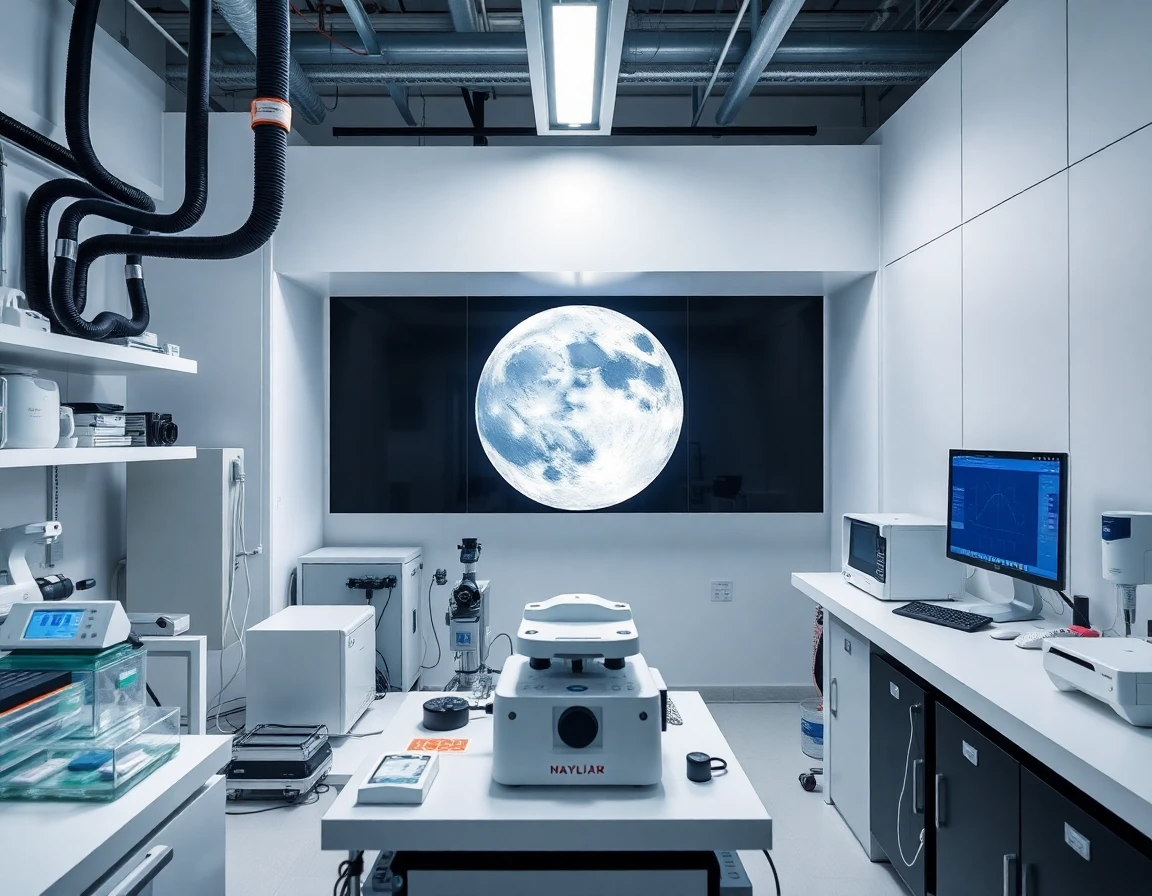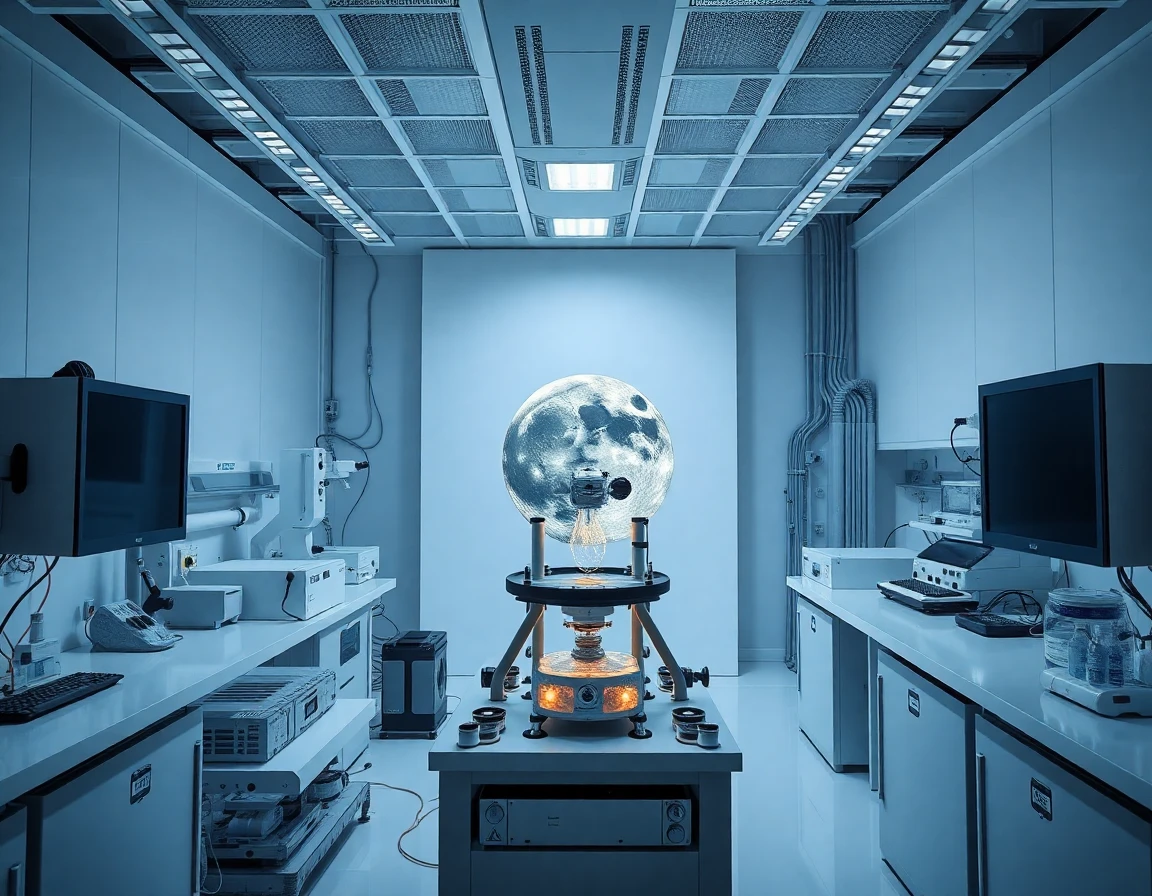As the world faces increasing energy demands and a dire need for sustainable alternatives, the concept of lunar mining has gained significant traction within the aerospace and defense sectors. Recent developments emphasize the extraction of helium-3, a promising isotope for clean fusion energy, alongside other valuable resources from the Moon’s surface. This article delves into the latest advancements in technology, partnerships, and legal considerations shaping the burgeoning field of lunar mining.
Advancements in Helium-3 Extraction Technology
In December 2024, Japanese lunar exploration company Ispace entered into a collaboration with Magna Petra to pioneer sustainable and non-destructive mining techniques aimed at extracting helium-3 from lunar regolith. Their memorandum of understanding outlines ambitions for commercial-scale helium-3 extraction, which aims to address terrestrial shortages of this isotope critical for future fusion energy applications.
Ispace is on track to launch its second lunar landing mission, slated for January 2025 or later, deploying the Resilience lunar lander equipped with a micro-lunar rover. This mission is pivotal for demonstrating regolith collection and terrain traversal capabilities, laying the groundwork for operational lunar mining. The Resilience lander’s design incorporates advanced navigation systems featuring MEMS accelerometers, ensuring precise positioning during challenging lunar conditions.
Innovations from Lunar Helium-3 Mining, LLC (LH3M)
Lunar Helium-3 Mining, LLC (LH3M) has made significant strides in helium-3 extraction technology, recently securing its fifth U.S. patent for an end-to-end system that encompasses detection, extraction, and refinement processes on the Moon. Their innovative approach employs three detection methods: mass spectrometry, neutron detection, and advanced imaging, integrated into partner rovers. This technology allows for the heating of lunar surface materials, which releases helium-3 gas for collection and refinement.
LH3M emphasizes the simplicity of their mechanical design, reducing potential breakdown risks during operation. Notably, helium-3 is concentrated within the top 3-4 centimeters of lunar regolith, significantly streamlining the extraction process. The company is actively engaging with U.S. and European rover manufacturers to deploy their technology as early as 2030, enhancing the potential for practical lunar mining.
Mining Asteroid Remnants: A New Frontier
Recent research indicates that mining materials from asteroids that have impacted the Moon might be more viable than directly harvesting free-floating near-Earth asteroids. Thousands of lunar craters contain remnants rich in platinum-group metals (PGMs) and hydrated minerals, presenting a dual opportunity for both bulk and rare material recovery essential for developing a sustainable cislunar economy.
However, challenges remain in economically recovering these resources. Factors such as impact dispersal, lunar gravity, and engineering constraints complicate the extraction processes. Nonetheless, the accessibility of lunar ore presents a more practical solution compared to traditional asteroid mining, suggesting a shift in focus for future resource endeavors.
Legal and Regulatory Frameworks in Lunar Mining
As the commercial interest in lunar mining intensifies, the need for robust legal frameworks to govern the extraction of lunar resources becomes increasingly urgent. The complexities surrounding ownership, resource rights, and international cooperation complicate the landscape of extraterrestrial resource utilization.
Companies like Ispace, which have established contracts with NASA for lunar regolith collection, underscore the necessity for clear governance policies to facilitate sustainable and peaceful exploitation of lunar resources. The evolving legal frameworks will not only impact companies but also shape international relations as nations contend with the implications of space resource commercialization.
Conclusion
The advancements in lunar mining, particularly in helium-3 extraction, hold immense potential for addressing Earth’s energy needs while opening new frontiers in space resource utilization. As companies like Ispace and LH3M continue to innovate and collaborate, the dream of a sustainable lunar mining industry becomes increasingly tangible. However, achieving this vision will require not only technological breakthroughs but also concerted efforts to establish legal and regulatory frameworks that support responsible resource management.
The journey towards lunar mining is just beginning, with the promise of transforming our understanding of energy production and resource accessibility in the cosmos. As we stand on the brink of this new era, the implications for the aerospace and defense industries are profound, heralding a future where the Moon may serve as both a resource reservoir and a stepping stone for deeper space exploration.
References
-
Tech Tuesday: Australian lunar rover, martian dirt, and beyond (mining.com.au) - 9/9/2025 This week’s Tech Tuesday looks at the technological advancements reshaping the mining sector, including the roll out of a moon rover.
-
Lunabotics Challenge - NASA (www.nasa.gov) - 9/5/2025 Lunabotics is a university-level competition for teams to use the NASA systems engineering process to design, build, and operate a lunar robot.
-
Is mining asteroids that impacted the moon easier than … - Phys.org (phys.org) - 8/11/2025 The resources tucked away in asteroids promise to provide the building blocks of humanity’s expansion into space.
-
Could asteroid mining actually work? Maybe if we start with … - Space (www.space.com) - 7/12/2025 Could asteroid mining actually work? Maybe if we start with impact sites on the moon. News. By Leonard David published July 12, 2025.
-
LH3M Wins Five Patents for Lunar Helium-3 Extraction (payloadspace.com) - 7/8/2025 LH3M secured its fifth US patent last month, covering the company’s end-to-end architecture for He-3 detection, extraction, and refinement on the Moon.
-
Moon mining is getting closer to reality: Why we need global rules … (phys.org) - 7/2/2025 Sep 13, 2025. Saturday Citations: A mechanism for liver failure; LIGO black hole kick observed; primordial black hole explosions. Sep 13, 2025.
-
Japanese company Ispace prepares to mine helium-3 on the Moon (universemagazine.com) - 12/13/2024 Space mining is moving closer to reality thanks to a recent agreement between Japanese company Ispace and Magna Petra, a lunar exploration …
-
Mining the moon ready to lift off by 2025 (www.mining.com) - 2/28/2019 With this approval, the deal is expected to go ahead and be completed on Wednesday. September 01, 2025 | 10:01 am. Gold …



